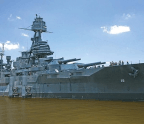
Washington had made it clear that while they supported the UK, they could not get involved in a conflict in the South Atlantic. There had been hope that the United States would provide airborne early warning planes, known as AWACS, but that was not going to happen. However, President Reagan’s administration did provide intelligence and on 9 April, the Pentagon passed information to the UK that revealed Argentina was lengthening the runway at Stanley in order to accommodate its fighter aircraft, such as A-4 Skyhawks, Mirage, Dagger and Super Étendards. This would give the junta the strategic advantage of being able to mount constant air strikes against the task force. The Argentine Air Force only had two tanker aircraft to serve the whole air force and navy. Its fighter bombers, the Mirage 111s and Daggers were not fitted for air-to-air refuelling. Without an extended runway the aircraft would have to return to Argentina for fuel and re-arm which would reduce their time around the Falklands. The upgrading of the airfield at Stanley threatened to change the dynamic of the conflict and give the enemy a strategic advantage. In 1979, Argentina had purchased 14 Super Étendards from France, after the United States put an arms embargo in place and stopped defence sales to Argentina in protest at the so called ‘dirty war’ – allegations of torture and oppression by the government. Between August and November1981 the first five Super Étendards arrived from France, along with five anti-ship sea skimming Exocet missiles. In the UK it was unclear if the junta’s pilots had been able to train with the new aircraft and had the vital instruction to launch the Exocet, many presumed they had little capability.
Meanwhile, Admiral Lewin was aware of the Argentine’s plans to expand the airfield. The Royal Navy had made the first strike at South Georgia on 25 April went the submarine was attacked and captured during the battle to re-take the island. Now the RAF were called on to do what they do best. The Vulcan was the only aircraft with the capability and was selected to carry out the mission, which was codenamed Operation Black Buck. Politically this was a daring mission that would strike fear into the heart of the Argentine occupiers and possibly encourage Buenos Aires to re-think its position. For the military the mission was simply designed to prevent the junta’s fighter aircraft operating from Stanley. It was clear that short take off and landing aviation would still be able to function from the airfield – but they






